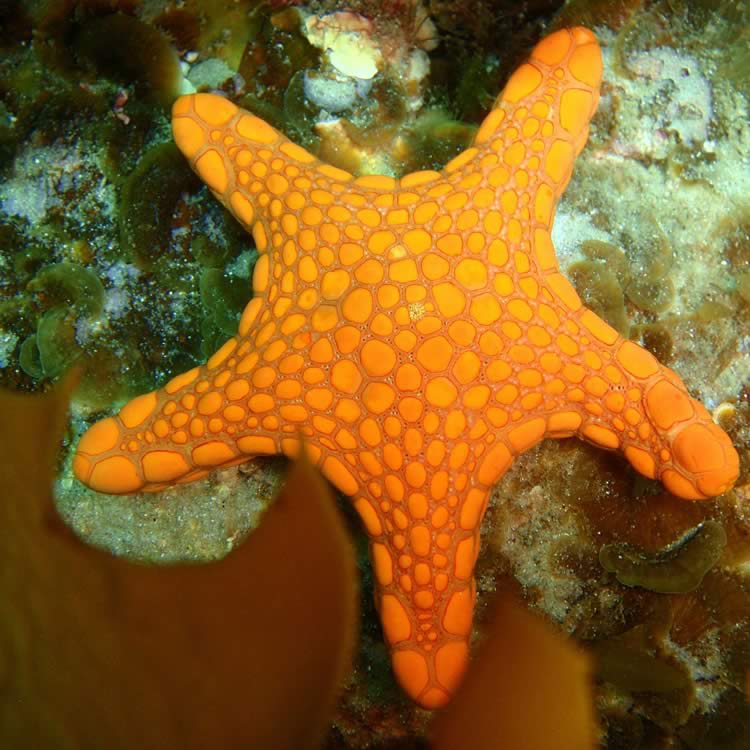Biscuit star

Community type
Habitat type
Rocky reefs, kelp beds and inter-tidal zone
This distinctive seastar grows to 5 cm and can be identified by its bright orange colour and large interlocking plates along its edges.
Biscuit stars inhabit rocky shores and reefs to a depth of 40 m. Like other seastars they have hundreds of small tubular feet, which they can move by pumping water inside them. The feet are able to grip surfaces using a type of glue made by the starfish, which leaves a series of tiny footprints! In the centre of the underside of the starfish is a circular mouth which the feet can direct food towards.
The biscuit star feeds on algae, sponges and small filter feeders. Seastars don’t have brains like humans, but have nerves throughout their body, connected to a ring around their mouth. They are able to detect light using light sensitive spots at the end of each arm.
